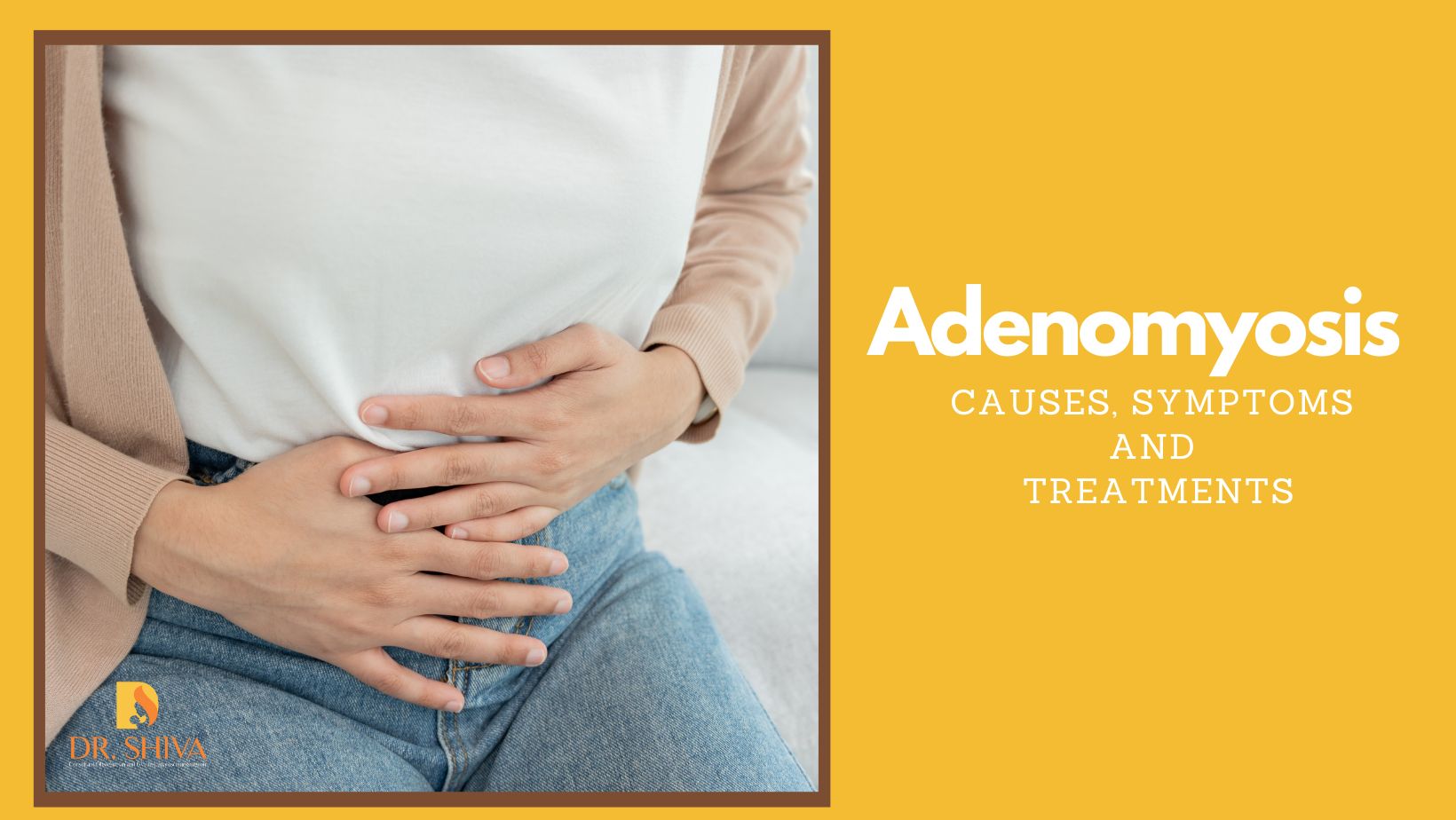
Adenomyosis is a common yet often misunderstood condition that affects many women worldwide. Characterized by the presence of endometrial tissue within the muscular walls of the uterus, adenomyosis can cause a range of symptoms and impact a woman’s quality of life. Here, we’ll explore the symptoms, causes, diagnosis, risk factors, and treatment options for adenomyosis.
For some women, periods are constantly associated with intense bleeding, relentless cramping, and a constant dull ache in the pelvic region. If you may be experiencing this, you might be facing adenomyosis. It is a condition where the endometrial tissue, the lining of your uterus that sheds during your period, decides to take root deep within the muscular wall of the uterus itself. This misplaced tissue can thicken and enlarge the uterus, leading to a myriad of unpleasant symptoms. Adenomyosis often gets overlooked compared to endometriosis
Symptoms:
Symptoms can vary greatly from woman to woman, and some may experience none. Listing some of the most common:
- Heavy or prolonged menstrual bleeding which may last longer than usual.
- Severe menstrual cramps
- Pelvic pain or pressure – A constant dull ache or a tightening sensation, this pain can intensify during your period.
- Cramps Beyond Your Period: Unlike cramps that fade away with your period, adenomyosis cramps might linger throughout your cycle.
- Pain during intercourse – Intimacy might become uncomfortable due to pain during sex.
- Abdominal bloating or swelling
- Irregular bleeding between periods
- Painful bowel movements or urination during menstruation – Frequent urination, constipation, or pressure in the bladder could be signs that the enlarged uterus is putting pressure on nearby organs.
Causes:
Though the exact cause of adenomyosis is not clear, there can be several factors that may contribute to its development:
- Hormonal imbalance: Fluctuations in estrogen levels, particularly during menstruation, may promote the growth of endometrial tissue within the uterine walls.
- Inflammation: Chronic inflammation within the uterus may lead to the infiltration of endometrial cells into the muscular layer.
- Prior uterine surgery: Previous surgeries involving the uterus, such as cesarean sections or fibroid removals, may increase the risk of adenomyosis
- Stem Cell issue: Stem cells, the body’s building blocks, might mistakenly develop into endometrial tissue within the uterine wall during fetal development.
- Surgical Trauma: Previous surgeries like cesarean sections or D&Cs (dilation and curettage) could be a contributing factor, though the evidence is not conclusive.
- Having Given Birth: Pregnancy and childbirth seem to be associated with an increased risk of adenomyosis.
Risk Factors:
While adenomyosis can affect women of any age, several factors may increase the risk of developing the condition:
- Age: Adenomyosis most commonly occurs in women over the age of 30, particularly those who have had children.
- Endometriosis: Having endometriosis increases your chances of developing adenomyosis.
- Uterine Fibroids: The presence of fibroids, non-cancerous growths in the uterus, might be a risk factor.
Diagnosis:
Diagnosing adenomyosis often requires a combination of medical history review, physical examination, and diagnostic tests:
- Medical History and Pelvic examination: Your healthcare provider may perform a pelvic exam to check for abnormalities in the size, shape, or texture of the uterus.
- Imaging tests: Ultrasound, magnetic resonance imaging (MRI), or transvaginal ultrasound can help visualize changes in the uterus consistent with adenomyosis. Sometimes a saline sonohysterogram (where saline solution is flushed into the uterus to look for abnormalities) might be used to visualize the uterus and identify thickening.
- Biopsy: In some cases, a tissue sample may be obtained through biopsy to confirm the presence of adenomyosis.
- Laparoscopy: In some cases, a minimally invasive surgical procedure using a laparoscope (a thin, lighted instrument) might be necessary to directly visualize the uterine lining.
Treatment for adenomyosis:
The treatment provided will be based on the severity of the symptoms and the individual’s preferences:
- Pain management: Over-the-counter pain relievers medications including ibuprofen or acetaminophen may help alleviate the menstrual cramps and pelvic pain. Anti-inflammatory medications, or even heat therapy can be your frontline defence against cramps and pain.
- Hormonal therapy: Birth control pills, hormonal intrauterine devices (IUDs), or gonadotropin-releasing hormone (GnRH) agonists may help regulate menstrual cycles and reduce symptoms. Birth control pills, progesterone, or medications that suppress ovulation can be your allies. They regulate your hormones, potentially shrinking the misplaced tissue and alleviating symptoms.
- Pain Management: Over-the-counter pain relievers,
- Minimally Invasive Procedures: Techniques like uterine artery embolization cut off blood supply to the misplaced tissue, blocking blood flow to the uterus) may be recommended.
- Surgery: In severe cases or for women who have completed childbearing, surgical options such as hysterectomy (removal of the uterus). However, it’s a major decision that should be carefully considered with your doctor, especially if you desire future pregnancies.
Management of Adenomyosis:
- Managing adenomyosis often involves a combination of medical treatment, lifestyle modifications, and self-care strategies:
- Practice relaxation techniques such as deep breathing, meditation, or yoga to reduce stress and alleviate pelvic pain.
- Maintain a healthy diet rich in fruits, vegetables, whole grains, and lean proteins to support overall well-being.
- Stay physically active with regular exercise such as walking, swimming, or cycling to improve circulation and alleviate discomfort.
Conclusion:
Adenomyosis is a complex yet manageable condition that requires careful evaluation and personalized treatment. By understanding the symptoms, causes, diagnosis, and treatment options for adenomyosis, women can take proactive steps to manage their health and improve their quality of life.

